
Asterivora fasciata is a species of moth in the family Choreutidae. It is endemic to New Zealand and has been found at Arthur's Pass. The larvae of this species have been reared on Celmisia densiflora and adults are on the wing in January.
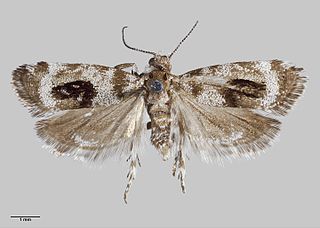
Asterivora inspoliata is a species of moth in the family Choreutidae. It is endemic to New Zealand and has been found in the southern parts of the South Island. Adults are on the wing in December and January.
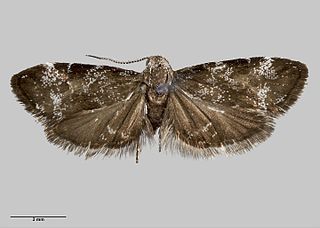
Asterivora tristis is a species of moth in the family Choreutidae. It is endemic to New Zealand and has been observed in Tongariro National Park. Adults of this species are on the wing in January.

Scoparia famularis is a species of moth in the family Crambidae. It is endemic to New Zealand.
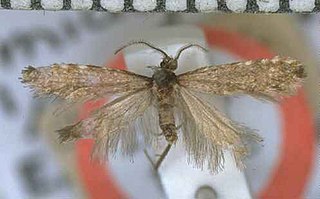
Reductoderces microphanes is a moth of the family Psychidae. This species is endemic to New Zealand. R. microphanes is a bagworm moth and its larvae likely feed on lichen or algae. Historically there has been some confusion over the identification of this species with George Hudson mistakenly describing and illustrating unnamed species and then attributing those descriptions and illustrations to this species. Charles Edwin Clarke discussed this species stating that it and its close relatives were active and able to be collected in damp mists before sunrise.
Grypotheca horningae is a moth of the family Psychidae. It was described by John S. Dugdale in 1987. It is endemic to New Zealand and is only known from the Snares Islands. The species is named in honour of Carol J. Horning who collected the holotype specimen in 1972.
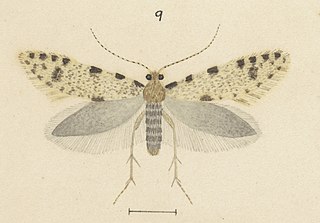
Reductoderces cawthronella is a moth of the Psychidae family. It was described by Alfred Philpott in 1921 and named in honour of the Cawthron Institute. It is endemic to New Zealand and has been collected in Nelson on the Maitai Valley side of the Botanical Hill. The larvae inhabits a fragile, pear shaped case and it has been hypothesised that they are lichen or alga browsers. Larvae pupate at the end of June and adults emerge at the beginning of August until the middle of October.

Asaphodes imperfecta is a moth in the family Geometridae. It is endemic to New Zealand and is found in the southern part of the South Island. The species inhabits low lying swampy native forest. The host plants of the larvae of this species is unknown. The adults are on the wing in December and January. It is classified as critically endangered by the Department of Conservation.
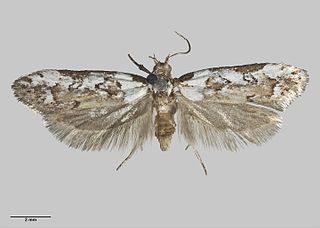
Trachypepla festiva is a moth of the family Oecophoridae and was first described by Alfred Philpott in 1930. It is endemic to New Zealand and has been collected in the northern parts of the North Island.
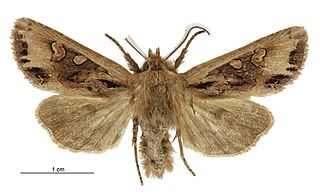
Ichneutica fenwicki is a moth of the family Noctuidae. This species is endemic to New Zealand and is found in the southern parts of the South Island and on Stewart Island. It is a distinctively coloured moth that is unlikely to be confused with closely related species. It is a spring flying moth being on the wing from September to November. The life history and host species of the larvae of I. fenwicki are unknown.

Zapyrastra stellata is a species of moth of the family Momphidae first described by Alfred Philpott in 1931. It is endemic to New Zealand and has been observed in Otago. The larvae of this species mine the leaves of Meuhlenbeckia. Adults are on the wing in June and December.
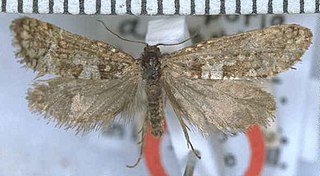
Mallobathra aphrosticha is a moth of the family Psychidae. This species is endemic to New Zealand and has been collected in Fiordland, Otago and Southland. The adults are on the wing in December and the female is semi-apterous.
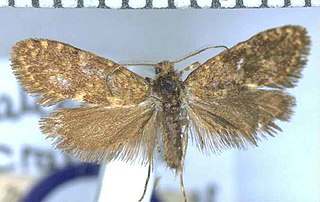
Mallobathra is a genus of moths belonging to the family Psychidae, and are bagworm moths. This genus was first described by Edward Meyrick. It is endemic to New Zealand. The type species of this genus is Mallobathra crataea.
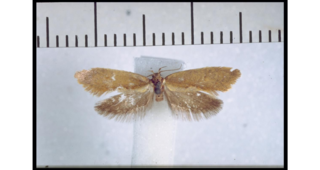
Tingena amiculata is a species of moth in the family Oecophoridae. It is endemic to New Zealand and has been observed in the Nelson, Tasman and Canterbury regions. This species has been collected amongst Hebe species and shrubland at altitudes of up to 4500 ft. It is similar in appearance to its near relatives Tingena basella and Tingena laudata.
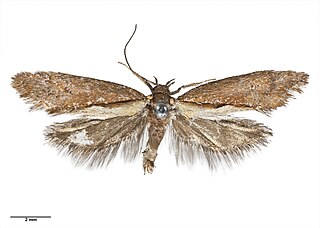
Tingena laudata is a species of moth in the family Oecophoridae. It is endemic to New Zealand and has been observed in Fiordland and Otago. Adults of this species are on the wing in January.
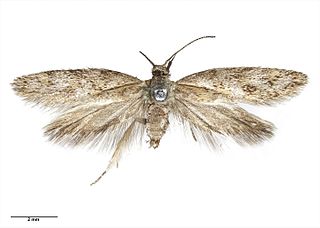
Tingena levicula is a species of moth in the family Oecophoridae. It is endemic to New Zealand.

Tingena robiginosa is a species of moth in the family Oecophoridae. It is endemic to New Zealand and has been observed in the southern parts of the South Island. It has been observed in subalpine habitats at altitudes of between 2700 and 3500 ft amongst Hebe and Cassinia species. The adults of this species are on the wing in December and January.
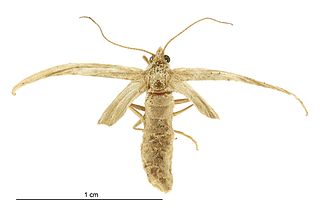
Asaphodes oraria is a species of moth in the family Geometridae. This species is endemic to New Zealand and has been observed in the southern South Island and on Stewart Island / Rakiura. The male is pale yellow coloured and the female has severely reduced wings and is flightless. The habitat of this species is tussock grasslands on coastal sand dunes and in the mountains at elevations of approximately 4,000ft. The larvae have adapted to feeding on exotic lawn daisy species in the genus Bellis. The adults of this species are on the wing from November to April.

Asaphodes recta is a moth in the family Geometridae. It is endemic to New Zealand and is found in the southern parts of the South Island. The preferred habitat of this species is open tussock grassland. The adults are on the wing in February and March. Larvae of this species have been reared on species in the genera Ranunculus and Bellis.

Pseudocoremia insignita, also referred to by the common name tree nettle flash, is a species of moth in the family Geometridae. It is endemic to New Zealand.



















